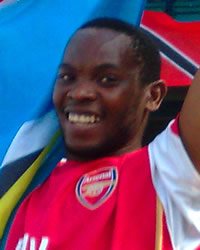Saint Lucia is an island nation in the Caribbean Sea. The original people were the Arawaks, who had their island taken by the Kalinagos in 800. In the 1600s-1700s, the French and British colonizers took it over from one another 14 times. During this time, the Europeans brought African slaves to Saint Lucia. Today Saint Lucians are 83% black, 12% mixed races, and 5% various other races and mixtures. They speak Lesser Antillean French Creole as their heart language, but English is the most common trade language. Saint Lucians live on three Caribbean islands: Their home island of Saint Lucia, Trinidad and Tobago, Grenada, and Dominica. Others have migrated to Canada, the United States, Spain, and France for better job opportunities.
Saint Lucians in Saint Lucia often work in the tourist industry. Others work in offshore banking, fishing, or agriculture. Bananas have traditionally been a key crop in the Caribbean nations.
Their music, culture, and cuisine reflect a blend of African, European, and Caribbean influences. Saint Lucians are especially fond of reggae and African-style rhythmic music.
Saint Lucians are predominantly Roman Catholic, but they can also be of various Protestant and Evangelical faiths. It is also likely that the hybridization of faiths includes elements of folk beliefs and voodoo. While this is not necessarily true in all cases, it shows up occasionally.
Despite a relatively strong representation of religious practices, this nation, like the rest of the world, is susceptible to being misled by false teachings. Television, radio, the internet, and church programs cannot be assumed to be biblical. Some things being done in the name of Evangelical Christianity is questionable in light of scripture.
Every nation, regardless of wealth, prominence, or poverty, needs kind oversight and instruction from Godly people. Saint Lucia is open to Christian outreach as evidenced by the large numbers of people who associate with various churches. The opportunity to minister to these churches and to rural peoples should not be overlooked.
Pray for God to invigorate Saint Lucians to accomplish his work in the Caribbean nations, North America, and Europe.
Pray for a Holy Spirit-empowered revival in Saint Lucian churches, so that they may draw closer to the Lord and share their faith with others.
Pray for the unemployed to find meaningful and valuable work.
Scripture Prayers for the Saint Lucian in Saint Lucia.
Information supplied by Wallace Revels.
https://en.wikipedia.org/wiki/Saint_Lucia
https://www.cia.gov/library/publications/the-world-factbook/geos/st.html
| Profile Source: Joshua Project |










